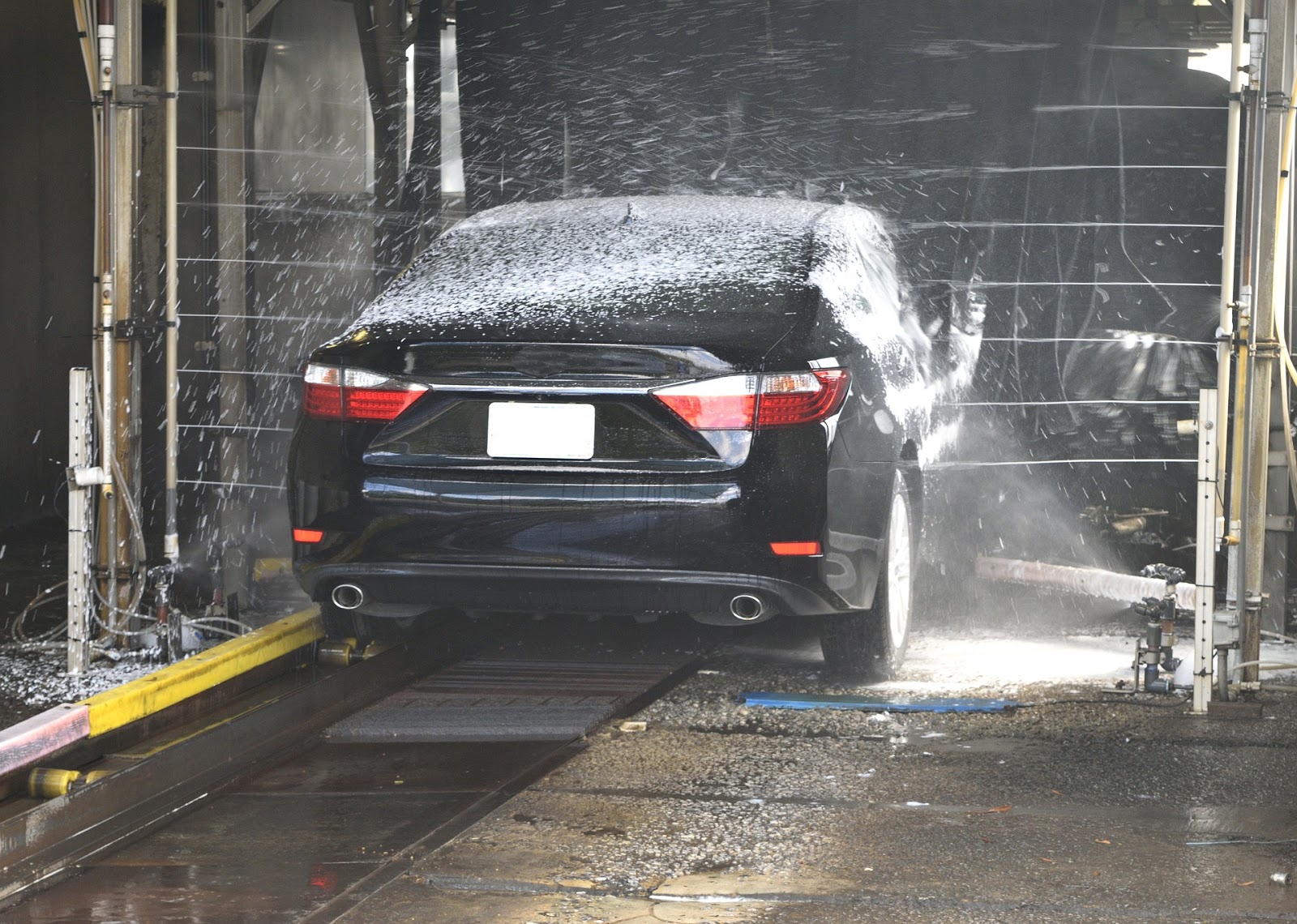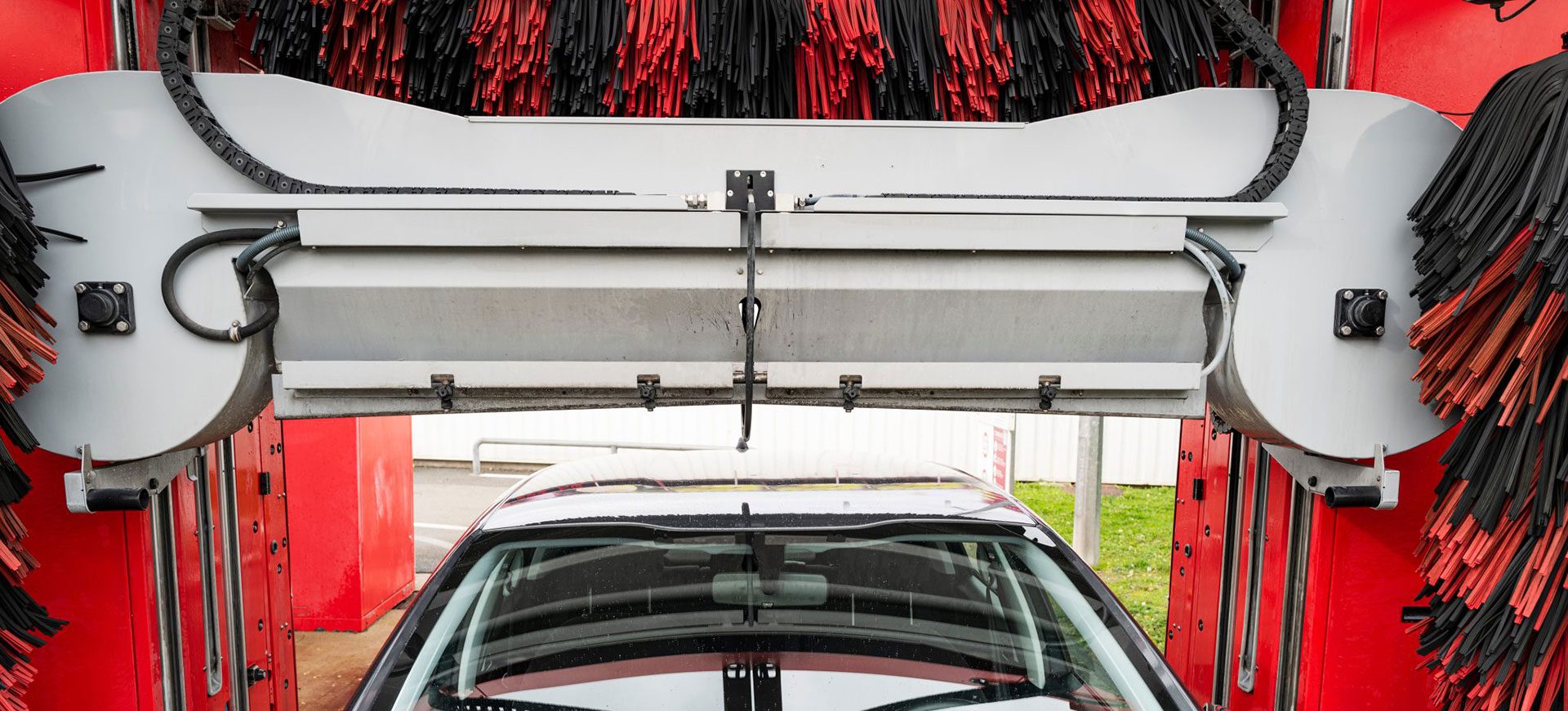
Winter. The season of twinkling lights, cozy nights, and… a relentless assault on your car. Road salt, grime, and slush conspire to wage war on your vehicle’s finish, undercarriage, and overall well-being. Neglecting your car during these harsh months can lead to premature rust, paint damage, and a host of other costly issues. It’s a battle, but one you can definitely win.
The good news is, you don’t need a complicated arsenal of detailing products or hours of meticulous scrubbing. You don’t need to spend hundreds of dollars at a professional detailing shop either. In fact, a simple change to your car washing routine can make a world of difference.
Think about it: We often associate car washes with spring and summer, when we’re trying to remove pollen or road trip grime. But winter washes are arguably even more crucial for preserving your car’s longevity and appearance. The constant exposure to salt and de-icing chemicals eats away at your car’s protective layers, leading to long-term damage if left unchecked.
So, what’s the secret weapon? What’s the one simple change that can drastically improve your car’s winter defense? It’s not a miracle product or a complicated technique. It’s something surprisingly straightforward, yet incredibly effective.
Ready to discover **One Simple Car Wash Hack to Save Your Car this Winter**? Then keep reading. The answer might surprise you, but its impact on your car’s winter survival will be undeniable. It’s a minor adjustment with major benefits, and it’s about to become your new winter car care essential.
Understanding the Winter Car Wash Challenge
The Perils of Road Salt
Road salt is the bane of every car owner’s existence during the winter months. It’s effective at melting ice and snow, making roads safer for travel, but it’s also incredibly corrosive to metal. When salt comes into contact with your car’s body, it starts a chemical reaction that leads to rust. This rust can spread quickly if not addressed, causing significant damage to your car’s frame, panels, and undercarriage.
The problem is exacerbated by the fact that salt gets everywhere. It’s kicked up by tires, splashed onto the body, and even aerosolized, coating every nook and cranny of your car. This means that even if you’re careful to avoid puddles and slush, your car is still likely to be exposed to salt on a regular basis.
And it’s not just the body of your car that’s at risk. Salt can also damage your brake lines, exhaust system, and suspension components. These parts are often located underneath the car, making them particularly vulnerable to salt exposure. Over time, salt can weaken these components, leading to costly repairs and safety issues.
Therefore, understanding the corrosive power of road salt is the first step in protecting your car during winter. Recognizing the threat helps you appreciate the importance of regular car washes and preventative measures. It’s a constant battle, but one that’s worth fighting to preserve the value and safety of your vehicle.
Ignoring the threat of road salt will inevitably lead to premature wear and tear, decreased performance, and a significant reduction in your car’s lifespan. Don’t underestimate the damage it can cause – proactive car care is essential for winter survival.
The Silent Threat of Grime and Debris
Beyond road salt, your car faces a barrage of other winter contaminants. Grime, dirt, sand, and even small pieces of gravel get kicked up from the road and cling to your car’s surface. These materials can act like sandpaper, gradually scratching and dulling your car’s paint finish.
This abrasive action is especially harmful during winter because the cold temperatures make your car’s paint more brittle and susceptible to damage. What might be a minor scratch in warmer weather can become a more significant issue in the winter months.
Furthermore, accumulated grime can trap moisture against your car’s surface, creating a breeding ground for rust and corrosion. This is particularly problematic in areas where salt is already present, as the combined effect can accelerate the rate of damage.
The undercarriage of your car is particularly vulnerable to the accumulation of grime and debris. This area is constantly exposed to spray from the road, and it’s often difficult to clean thoroughly. Over time, this buildup can lead to rust and corrosion, compromising the structural integrity of your car.
Therefore, regular car washes are crucial for removing not only salt but also grime and debris. By keeping your car clean, you can minimize the abrasive damage and prevent the accumulation of moisture that leads to rust and corrosion. Consider it a regular defense against the silent, insidious threat of winter grime.
Why Winter Car Washing is Different
Winter car washing isn’t just about aesthetics; it’s about protecting your investment. The frequency and method of washing should be adjusted to address the unique challenges of the season. Unlike summer washes, which are often about removing bugs and pollen, winter washes are primarily about removing salt and grime.
This means that you may need to wash your car more frequently during the winter, especially after periods of heavy snowfall or when roads are heavily salted. A good rule of thumb is to wash your car at least every two weeks, or even more often if you live in an area with severe winter weather.
It’s also important to choose the right type of car wash. Touchless car washes are a good option because they avoid the use of abrasive brushes that can scratch your car’s paint. However, they may not be as effective at removing heavy buildup of salt and grime.
If you prefer to wash your car at home, be sure to use a car wash soap that is specifically designed for winter use. These soaps are formulated to remove salt and grime without damaging your car’s paint. Also, pay special attention to the undercarriage of your car, as this is where salt and grime tend to accumulate the most.
In short, winter car washing requires a different approach than summer car washing. By understanding the unique challenges of the season and adjusting your washing routine accordingly, you can protect your car from the damaging effects of salt, grime, and debris.
The Hack: Undercarriage Wash is Key
Why the Undercarriage Matters
The undercarriage of your car is often overlooked, but it’s one of the most vulnerable areas during winter. It’s constantly exposed to spray from the road, and it’s difficult to clean thoroughly. This makes it a prime target for salt, grime, and debris, which can quickly lead to rust and corrosion.
The undercarriage includes vital components such as brake lines, exhaust system, suspension, and even parts of the engine. Damage to these parts can compromise the safety and performance of your car, leading to costly repairs.
Furthermore, rust and corrosion can weaken the structural integrity of your car’s frame. This can make your car less safe in the event of an accident and reduce its overall value. A well-maintained undercarriage is essential for ensuring the longevity and safety of your vehicle.
Therefore, paying attention to the undercarriage during winter car washes is crucial. Regular cleaning can prevent the buildup of salt, grime, and debris, protecting these vital components from damage and extending the life of your car.
Don’t neglect the undercarriage – it’s a vital part of your car that needs extra attention during the harsh winter months. Overlooking this area can lead to significant problems down the road.
Finding an Undercarriage Wash
Not all car washes are created equal. While many car washes offer basic washing services, only some offer a dedicated undercarriage wash. It’s important to seek out car washes that specifically include this feature, especially during winter.
Look for signage that clearly indicates the availability of an undercarriage wash. Some car washes may even have a separate bay specifically designed for undercarriage cleaning. If you’re unsure, don’t hesitate to ask an attendant whether their car wash includes this service.
When selecting a car wash, consider the type of undercarriage wash that’s offered. Some washes use a simple spray system, while others use a more powerful jet system that can more effectively remove salt and grime. The more comprehensive the undercarriage wash, the better protected your car will be.
You can also look for car washes that use specialized detergents or rust inhibitors in their undercarriage wash. These products can provide an extra layer of protection against corrosion, further safeguarding your car from the damaging effects of winter weather.
Remember, finding the right car wash with a thorough undercarriage wash is a critical step in **One Simple Car Wash Hack to Save Your Car this Winter**. It’s worth the extra effort to ensure that your car’s undercarriage is properly cleaned and protected.
DIY Undercarriage Cleaning (If You Must)
While a professional car wash with an undercarriage wash is ideal, you can also clean your car’s undercarriage at home if necessary. However, this requires more effort and careful consideration.
First, you’ll need a garden hose with a nozzle that can produce a strong stream of water. You may also want to use a pressure washer, but be careful not to use too much pressure, as this can damage sensitive components.
Next, you’ll need to jack up your car to gain better access to the undercarriage. Make sure to use jack stands for safety, and never work under a car that is only supported by a jack.
Once your car is properly elevated, use the hose or pressure washer to thoroughly rinse the undercarriage, paying special attention to areas where salt and grime tend to accumulate. You may also want to use a long-handled brush to scrub away stubborn deposits.
After rinsing, consider applying a rust inhibitor or undercoating spray to provide an extra layer of protection against corrosion. Be sure to follow the manufacturer’s instructions carefully when applying these products.
Keep in mind that DIY undercarriage cleaning can be messy and time-consuming. It’s also important to take safety precautions to avoid injury. If you’re not comfortable working on your car, it’s best to leave the job to a professional.
Maximizing the Benefits of Your Car Wash
Frequency is Your Friend
When it comes to winter car washing, frequency is key. Washing your car regularly is the best way to prevent the buildup of salt, grime, and debris that can damage your car’s finish and undercarriage. A single wash after months of neglect won’t undo the damage already done.
The ideal frequency depends on your location and the severity of winter weather. If you live in an area with frequent snowfall or heavy salting, you may need to wash your car as often as once a week. In milder climates, washing your car every two weeks may be sufficient.
Pay attention to weather forecasts and road conditions. Wash your car promptly after periods of heavy snowfall or when roads have been heavily salted. Don’t wait for weeks to pass before addressing the buildup of contaminants.
Consider setting a reminder in your calendar to wash your car regularly. This will help you stay on track and avoid neglecting your car’s winter car care routine. Consistency is essential for protecting your car’s longevity and appearance.
Remember, frequent car washes are a small investment that can save you money in the long run by preventing costly repairs and maintaining your car’s value. Embrace the power of frequency in your winter car care strategy.
Pre-Wash Prep: A Smart Start
Before you head to the car wash, consider giving your car a quick pre-wash prep. This can help to remove loose debris and make the car wash more effective.
Use a soft brush or broom to sweep away any snow or loose debris from your car’s roof, hood, and trunk. This will prevent these materials from being dragged across your car’s paint during the wash, which could cause scratches.
You can also use a hose to rinse off any loose dirt or grime. This will help to loosen stubborn deposits and make them easier to remove during the car wash. However, be sure to use a gentle spray nozzle to avoid damaging your car’s paint.
Pay special attention to areas where salt and grime tend to accumulate, such as the wheel wells and lower body panels. These areas may require extra rinsing or scrubbing to remove heavy buildup.
By taking a few minutes to pre-wash your car, you can significantly improve the effectiveness of the car wash and help to protect your car’s finish from damage. A little prep goes a long way.
Post-Wash Protection: Seal the Deal
After washing your car, consider applying a wax or sealant to provide an extra layer of protection against the elements. This will help to repel water, dirt, and grime, making it easier to keep your car clean between washes.
Wax and sealants create a hydrophobic barrier that prevents water from beading on your car’s surface. This not only makes your car look cleaner but also reduces the risk of water spots and corrosion.
There are many different types of waxes and sealants available, each with its own unique properties. Some waxes are designed to provide a deep, glossy shine, while others are formulated for maximum durability.
Choose a wax or sealant that is appropriate for your car’s paint type and the weather conditions in your area. Apply the product according to the manufacturer’s instructions, and be sure to allow it to cure properly before exposing your car to the elements.
Post-wash protection is an essential step in maintaining your car’s appearance and protecting it from damage. It’s the finishing touch that seals the deal and keeps your car looking its best.
Addressing Common Winter Car Wash Concerns
The Cold Weather Dilemma
Washing your car in cold weather can be a challenge. Freezing temperatures can cause water to freeze on your car’s surface, leading to ice buildup and potential damage. However, with proper precautions, you can safely wash your car even in the winter.
Choose a car wash that is heated or enclosed to prevent water from freezing. If you’re washing your car at home, try to do it during the warmest part of the day. Avoid washing your car in direct sunlight, as this can cause the water to freeze more quickly.
Use warm water instead of cold water to help prevent freezing. However, be careful not to use water that is too hot, as this can damage your car’s paint. A comfortable lukewarm temperature is ideal.
Dry your car thoroughly after washing to prevent water from freezing on the surface. Use a microfiber towel or a leaf blower to remove any remaining water. Pay special attention to areas where water tends to accumulate, such as the door jambs and mirrors.
With a little planning and preparation, you can overcome the cold weather dilemma and keep your car clean even during the winter months.
Frozen Doors and Locks
One of the most common winter car problems is frozen doors and locks. When water gets into the door seals or lock mechanisms, it can freeze and prevent you from opening your car. Fortunately, there are several ways to prevent and address this issue.
Before winter arrives, lubricate your door seals with a silicone-based lubricant. This will help to prevent water from sticking to the seals and freezing. You can also apply a lubricant to your door locks to prevent them from freezing.
If your doors are already frozen, try gently pushing on the door to break the ice seal. Avoid pulling too hard, as this could damage the door seals or the door itself.
You can also use a de-icer spray to melt the ice around the door seals and lock mechanisms. These sprays are readily available at most auto parts stores.
Never use hot water to thaw frozen doors or locks, as this can damage the paint and other components. Patience and proper lubrication are the keys to preventing and resolving frozen door and lock issues.
The Automatic vs. Hand Wash Debate
The debate between automatic and hand car washes is an ongoing one, particularly during the winter. Each option has its own advantages and disadvantages, and the best choice depends on your individual needs and preferences.
Automatic car washes are convenient and quick, making them a good option for busy people. However, some automatic car washes use abrasive brushes that can scratch your car’s paint. Touchless car washes are a safer option, but they may not be as effective at removing heavy buildup of salt and grime.
Hand car washes are more labor-intensive, but they allow you to have more control over the cleaning process. You can use gentle soaps and soft cloths to avoid scratching your car’s paint. Hand car washes also allow you to pay special attention to areas that are particularly dirty or difficult to reach.
Ultimately, the best choice between automatic and hand car washes depends on your priorities. If convenience is your top priority, an automatic car wash may be the best option. However, if you’re concerned about protecting your car’s paint, a hand car wash is the safer choice.
Regardless of which option you choose, remember that **One Simple Car Wash Hack to Save Your Car this Winter** is to ensure that the undercarriage is thoroughly cleaned.
Beyond the Wash: Additional Winter Car Care Tips
Invest in Good Floor Mats
Winter weather brings a lot of moisture and dirt into your car’s interior. Snow, slush, and mud can quickly accumulate on your floor mats, creating a mess and potentially damaging your car’s carpets. Investing in a good set of floor mats can help to protect your car’s interior from these winter woes.
Choose floor mats that are made from durable, waterproof materials such as rubber or vinyl. These mats are easy to clean and will prevent moisture from seeping into your car’s carpets.
Consider purchasing floor mats that are custom-fit to your car’s make and model. This will ensure that the mats fit snugly and provide maximum protection. Avoid using generic floor mats that may not fit properly and could slide around.
Clean your floor mats regularly to remove accumulated dirt and moisture. You can simply shake them out or hose them down with water. For more stubborn stains, use a mild soap and water solution.
Good floor mats are a small investment that can make a big difference in protecting your car’s interior during the winter months. They’ll keep your car looking clean and prevent damage to your carpets.
Check Your Tire Pressure Regularly
Tire pressure is an important factor in winter driving safety. Cold temperatures can cause tire pressure to drop, which can reduce your car’s handling and fuel efficiency. Checking your tire pressure regularly and inflating your tires to the recommended level is essential for safe winter driving.
Check your tire pressure at least once a month, and more often if you experience significant temperature changes. You can find the recommended tire pressure for your car on a sticker inside the driver’s side doorjamb or in your car’s owner’s manual.
Use a reliable tire pressure gauge to measure your tire pressure. Be sure to check the pressure when your tires are cold, as the pressure will increase as the tires warm up. Add air to your tires until they reach the recommended pressure.
Low tire pressure can increase your risk of hydroplaning and reduce your braking distance. Maintaining proper tire pressure will improve your car’s handling and safety in winter weather.
Prioritize tire pressure checks alongside your **One Simple Car Wash Hack to Save Your Car this Winter** for comprehensive winter car care.
Keep an Emergency Kit in Your Car
Winter weather can be unpredictable, and it’s always a good idea to be prepared for emergencies. Keeping an emergency kit in your car can provide you with the supplies you need to handle unexpected situations such as breakdowns, accidents, or being stranded in the snow.
Your emergency kit should include essential items such as a flashlight, jumper cables, a first-aid kit, a blanket, a shovel, and some snacks. You may also want to include a cell phone charger, a map, and some extra warm clothing.
Check your emergency kit periodically to ensure that all the items are in good working order and that any perishable items have not expired. Replenish any items that are missing or damaged.
Store your emergency kit in a readily accessible location in your car, such as the trunk or under the passenger seat. Familiarize yourself with the contents of the kit so that you can quickly find what you need in an emergency.
Having an emergency kit in your car can provide you with peace of mind and help you to handle unexpected situations safely and effectively.
Conclusion
Winter can be tough on your car, but with the right approach, you can protect it from damage and keep it looking its best. Remember, **One Simple Car Wash Hack to Save Your Car this Winter** is to prioritize the undercarriage wash, it’s the key to combating the corrosive effects of road salt and grime. Coupled with frequent washing, proper preparation, and a few additional winter car care tips, you can ensure your vehicle survives the season unscathed.
By implementing these strategies, you’ll not only extend the life of your car but also maintain its value and appearance. So, don’t let winter weather get the best of your vehicle. Take proactive steps to protect it, and enjoy a safe and stress-free driving experience.
We hope you found this article helpful. Be sure to check out our other articles for more tips and advice on car care and maintenance. From detailing guides to troubleshooting tips, we’ve got you covered. Happy driving!
The answer of **One Simple Car Wash Hack to Save Your Car this Winter**:
- Prioritize the undercarriage wash during every car wash.


